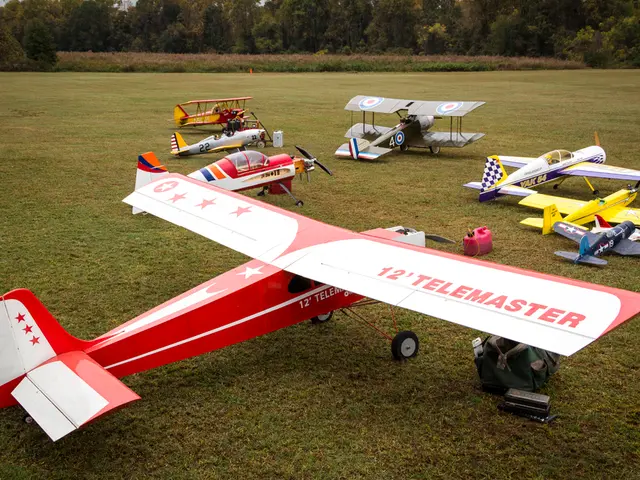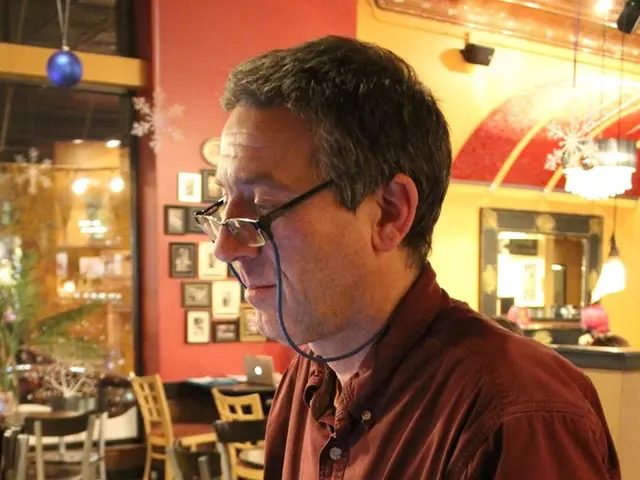Navigating the Moon: A GPS-like System for Lunar Exploration, Courtesy of EU Space Agency and GMV
Development of a Lunar Navigation System Similarly to GPS on Earth
Get ready for moon exploration to become as familiar as a city drive with Google Maps or Waze! Spain's leading tech company GMV, alongside the European Space Agency (ESA), have cooked up a GPS-like navigationsystem for the Moon. Known as the Lunar Pathfinder Initial Navigation (LUPIN), this groundbreaking tech aims to make lunar trips as intuitive as navigating Earth's cityscapes.
Steven Kay, the project's head honcho, shared his insights with Reuters: "With LUPIN, we're bringing Europe a step closer to establishing a human presence on the Moon, a potential gateway to Mars exploration or human settlement on Mars."
Belonging to ESA's test program on positioning, navigation, and timing, LUPIN aims to tackle the growing curiosity surrounding lunar surface exploration, whether it's scientific research, minerals, or even future tourism. By relying on signals from satellites in lunar orbit, LUPIN aids rovers and astronauts in pinpointing their real-time location on the lunar landscape.
Unveiling the Machinations of LUPIN
- Satellite-based Navigation: Much like GPS satellites circling Earth, LUPIN requires orbiting satellites around the Moon to transmit signals. Processing these signals allows the system to deliver precise positioning, navigation, and timing services tailored for the Moon's environment.
- Embracing Lunar Landscapes: Moon's rugged volcanic terrains, permanently shadowed craters, and zero atmosphere make navigation challenging. To tackle these difficulties, LUPIN combines conventional planetary navigation techniques with future lunar satellite signals.
- Trials and Tribulations: To perfect this tech, ESA chose the Canary Islands' Fuerteventura, with its volcanic geology and rough topography mimicking lunar surface features. These ideal terrestrial conditions allow for trials, ensuring LUPIN can handle the Moon's intricate terrains around the southern pole and other complex regions.
- User-friendly Interface: LUPIN strives to deliver an interface as user-friendly as Google Maps, but crafted to handle the Moon's harsh conditions, enabling astronauts and rovers to plan routes and maintain position awareness seamlessly.
Applications of LUPIN: A Moonshot for Lunar Exploration
- Enhanced Mobility: LUPIN's real-time, precise positioning assists lunar rovers and astronauts, improving safety, autonomy, and efficiency, allowing for more intricate exploration and scientific operations.
- Astronaut Guidance: Navigating tough lunar regions like permanently shadowed craters, where sunlight is scarce, remains challenging. LUPIN will empower astronauts with the confidence to traverse even the trickiest terrains.
- Infrastructure Development: During the establishment of lunar bases and habitats, LUPIN will aid logistics, construction, and resource management by providing thorough location data.
- Scientific Advancements: Precise navigation equips researchers to collect detailed geospatial data, fostering advanced geological and environmental studies on the Moon.
- A Leap Toward Comprehensive Navigation: LUPIN presents itself as a stepping stone towards a comprehensive lunar navigation network, essential as human and robotic activity on the Moon increases over the coming years.
Embrace the future of lunar exploration! As LUPIN continues development, lunar travel will become increasingly accessible and safe, paving the way for sustained lunar presence and activity.
Sources: ntv.de, RTS.[1] European Space Agency: LUPIN Fact Sheet (https://www.esa.int/Websites/ESA/images/COO/LUPIN_FS_EN.pdf)[2] Science QUARTERLY: Making Sense of Lunar Navigation (https://www.sciencequarterly.com/news/making-sense-lunar-navigation/)
- The innovative LUPIN system, a product of collaboration between the European Space Agency (ESA) and Spain's GMV, aims to replicate the familiarity of terrestrial navigation on the Moon by using satellite-based navigation, catering to the Moon's unique environment.
- The LUPIN system will leverage the challenges posed by the Moon's rugged volcanic terrains, permanently shadowed craters, and zero atmosphere by combining conventional planetary navigation techniques with future lunar satellite signals, ensuring it can handle the Moon's diverse terrains.
- The development and testing of LUPIN take place in Fuerteventura, Canary Islands, due to its volcanic geology and rough topography mirroring lunar surface features, allowing for accurate simulation and trials.
- As LUPIN advances, it promises to enable astronauts and rovers to plan routes, maintain position awareness, and manage resources more effectively, fostering scientific advancements, enhancing lunar mobility, and facilitating the construction of lunar infrastructure.




